When Napoleon occupied Cherasco, after several defeats upon the Piedmontese, one of his conditions for granting them the armistice was the demolition of the Exilles fortress, an impregnable emplacement too dangerous to be left on foot. It is said that its tearing down and destruction took him two years of hard work and dinamite, until it was flattened to rubble. Only the well survived, a work from the mid XVIIth century, almost two hundred feet deep.
Notwithstanding this destructing labour, two decades later the works for the reconstruction of the stronghold began, paid -ironies of History- by the funds from the sanctions exacted to France as a compensation for the damages caused by the war; and from those works arose the impressive and imposing fortress we can behold and admire nowadays.
With this Colossus of a construction by the charming village of Exilles, on an spectacular Alpine background, my first kilomeres on Italian land were welcomed, causing me indellible impressions. Very rarely a set of architecture and nature has shocked me that much. This is my first time ever in Italy, and I don’t think that this region, the Piedmont, will leave any tourist indifferent; not only for its beauty and the shocking originality of the villages, but also for the customs and the character of its inhabitants. Such was my transition from the rational and reasonable French road system to the absurd and unfathomable chaos of Italian routes. I mean their numbering: I haven’t ever before been driving along any country where it was so complicated to follow a given route. No Italian road preserves its number along more than thirty kilometres, and there is hardly any crossing where numbers don’t suddenly change. A real mess, useless to anyone.
And I rather won’t digress here about the driving habits of the Italians. I’ll leave that for another chapter…
If I found majestic the French Alps (by comparisib with my homeland Pyrinees), the Italian were twice as much. Not without reason this is such a touristic region, and so frequented by bikers. This is the part of Europe where you definitely don’t want to go around waving your fellow riders, because there’s no way fitting together a proper attention to the road and a due motorcycle brotherhood politeness; not to mention if you want to enjoy the landscapes at all. Two wheeled traffic is non-stop! So, forgive me those riders whose “V’s” I paid no heed, but my priorities were somewhere else this time.
Thus I arrive to the pictoresque and genuinely Piedmontese Exilles, in the high valley of the Dora river; a village that has me the whole day open mouthed out of surprise and awe. A true landmark in my journey. Characteristic of this region, the place is all built on stone and, oddly enough, also with stone roofs; large and heavy, thick granite chippings that confer the houses a verily unique aspect.
The second significant element in this rural style is the layout and entrance to the houses from the winding streets: through archways (often like tunnels) under another houses, leading to inner yards or alleyways where, in turn, other archways open up, resulting in a rather labyrinthic village, looking sometimes as if a town carved in the rock.
These two peculiarities, along with some other urbanistic oddity, probably make these Piedmont villages unique places in the world.
Just another quite common element in this region is the fountains-sink, whereof there are normally several in each village, all of them built with the same pattern.
However, the surprise I got from this all new to me style was soon overshadowed by the fortress with which I begin this chapter, arising in the outskirts of Exilles.
Few fortified places in the Western Alpine arc can pride themselves of works like the one on the rocky topography overlooking the Exilles settlement, built and restyled with a terrific scientifical support, developed between the XVIth and XXth centuries along with the warlike vicissitudes, collecting the evolution of the military architectures. A fortification conditioned by geographic, orographic and politic facets on the border of the biggest power blocks, as the Dora valley has always been a fundamental territorial corridor in the Alps, a connecting line between North and South Europe, channel of armies and therefore contended land between the different nations.
The forthcoming of the national states along the XVIth century determined a modification of the defensive works near the borders. The Dora valley, cross-wise crossed by the limit between the lands of the Savoys and those of the Dauphin, witnessed a continuous congretation of fortified facilities.
Between 1562 and 1590 the Catholic militias and the French reformists quarrel in religious bloody combats, and the first big military remodeling of Exilles (by then in the hands of the French) took place in the XVIIth century: along twenty years of works the old medieval castle is transformed into a fortress, reinforcing its front with pentagonal bastions and introducing a complete revolution in concepts and structures: a sheltered passageway is built for the fusiliers, the moats are deepened, some retaining walls are fortified, the inner fences get streamlined and new constructions are built for the garrison, lodgings and baggages.
Later on during the same century further improvements take place for increasing the logistic potential, like enlarging the inner room available, taking advantage of the big rocky platform in front of the esplanade; but in the middle of these works, by the beginning of the XVIIIth century, the fortress is sieged, bombed and finally taken by the Austro-Piedmontese, thus putting an end to the French domination of these territories, which now will belong to the Savoy house according to the Treaty of Utretch.
The Savoys inmediately repair the fort for their own use, introducing in turn new and more modern modifications; and though the French tried to siege it, that was in vain: by then its defense wess too optimized and the place was close to impregnable. In this new reform, special care was taken for integrating the stronghold in its natural rocky environment, so as to make it look as an extension of the orography, rather than a human construction; and that is the prevailing impression nowadays.
A colossal work, unique and different, that goes beyond the classical schemes, the fortification is not left to walls or stone bastions, but entrusted to the rock itself, conveniently carved and modelled. Moats, bastions and retaining walls are nought but rock walls, whereof only the summit is brickwork.
But by the end of the XVIIIth -as said above- a victorious Napoleon captures the Prince of Savoy and, for the Cherasco armistice, sets as a condition the demolition of Exilles. He didn’t need to conquer it, nor could have he: it was impregnable.
During the reconstruction ensuing the Treaty of Vienna the stronghold was reverted to its prior shape, except of course where the dinamite had occasioned irreversible damage to the rock. But alas!, men’s works are short lived and perishable: by the end of XIXth century the technological innovations determine the ongoing obsolescence of this magnificent fortress. The old constructions reveal themselves vulnerable to the new weapons and war techniques, and hence that the main use of Exilles during the two Big Wars was merely as a prison, having lost almost all of its military relevance.
I hope that, after these explanations and pictures, the reader can better understand my astonishment. Before I realized, it was already too late for further traveling. I found accomodation just a few kilometres down the valley, in Chiomonte, a village quite similar to Exilles: the same granite roofs, the same houses of twisted disposition, the same fountain-sinks of gurgling water. Don’t miss this video:
When I’m walking around, a man asks me: Cerca quelq’uno? “Are you looking for someone? Maybe I can be of help.” The same polite formula I’ll hear in other Piedmont villages; hard to tell if it comes from their hospitality or just out of their curiosity; or maybe both.
As a last praising note, be it said here that the tapa one gets in Italy with the evening beer is almost a meal, and that after a couple of beers you can consider you’ve already had dinner.


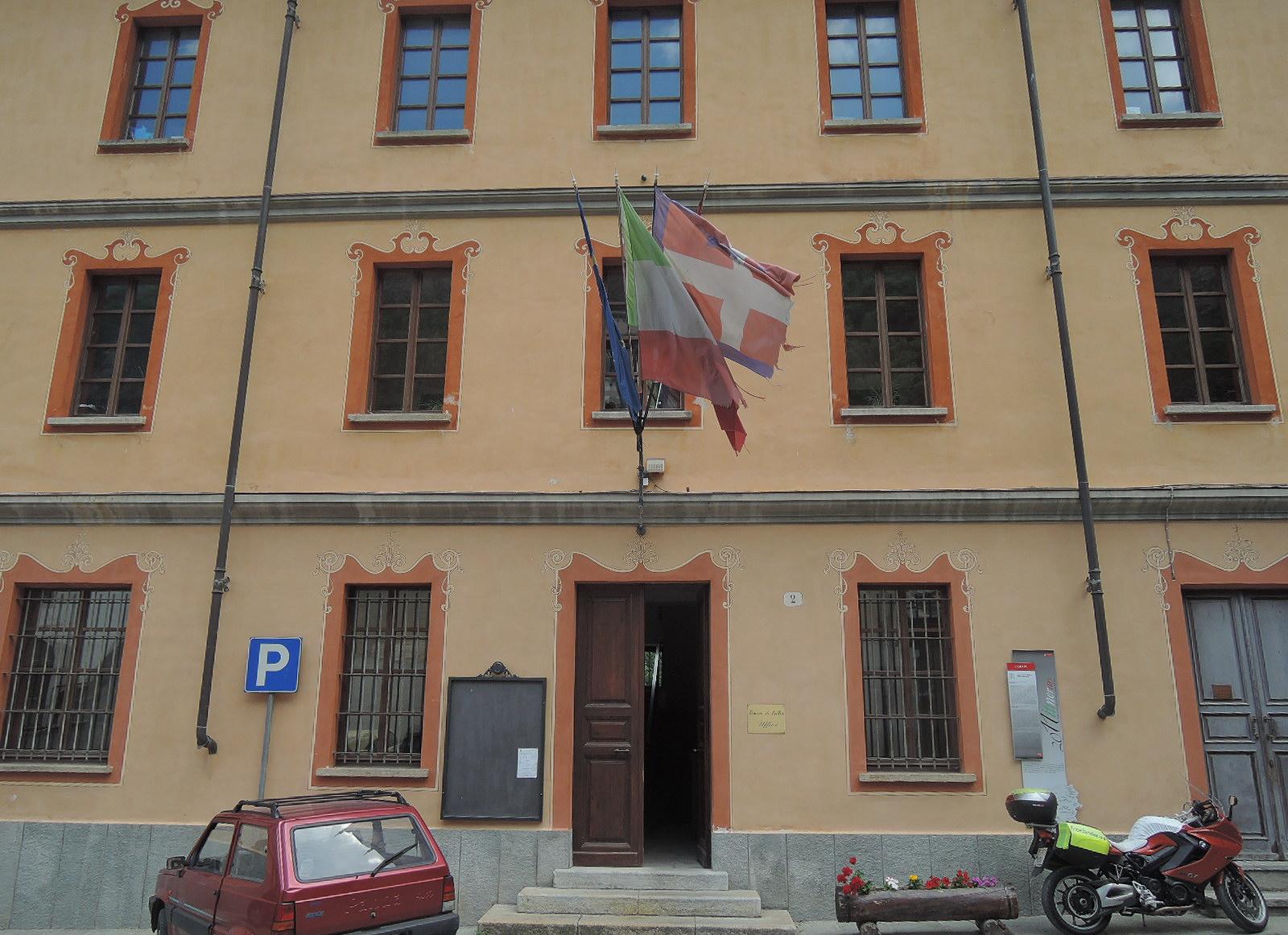
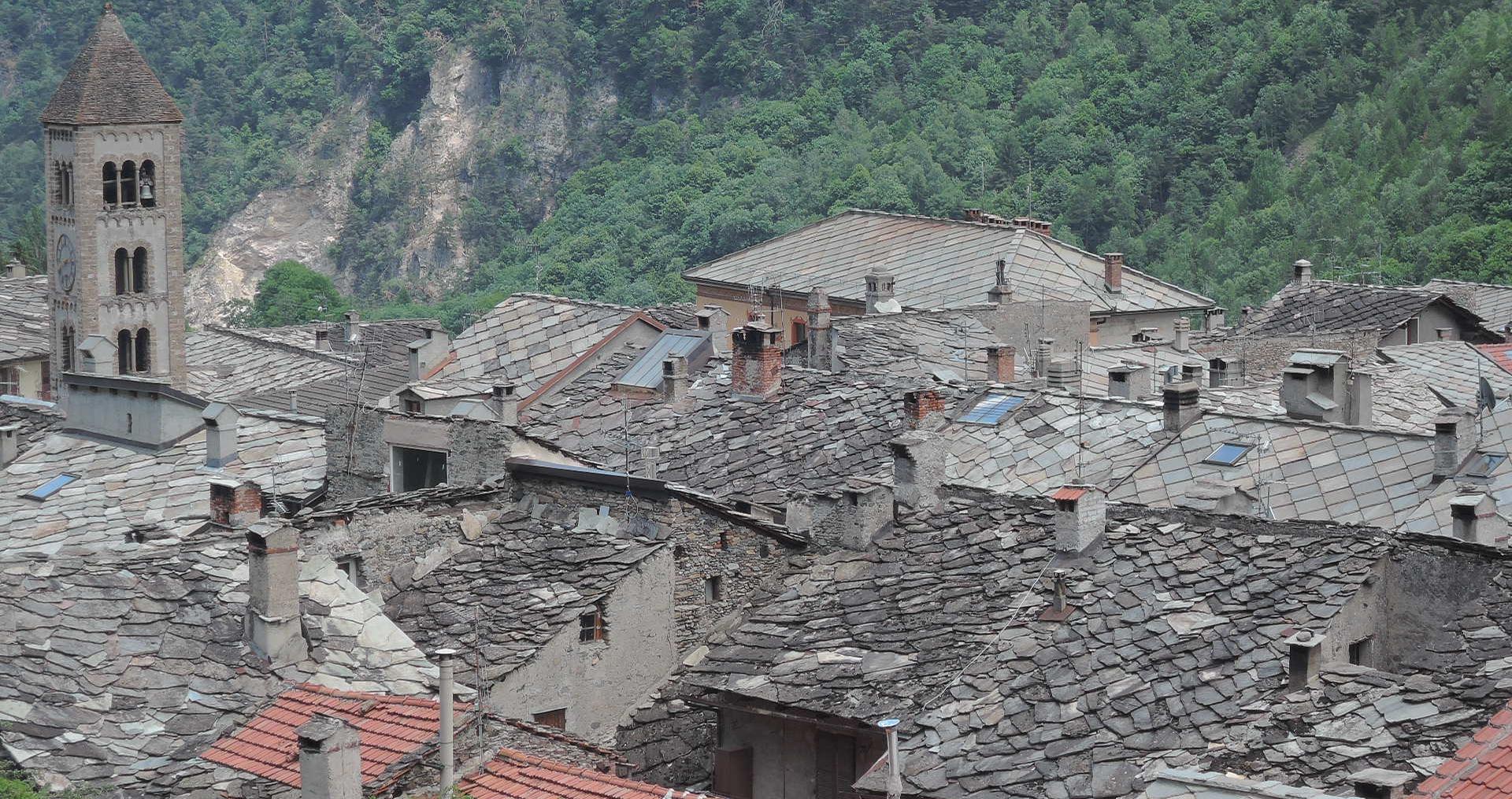

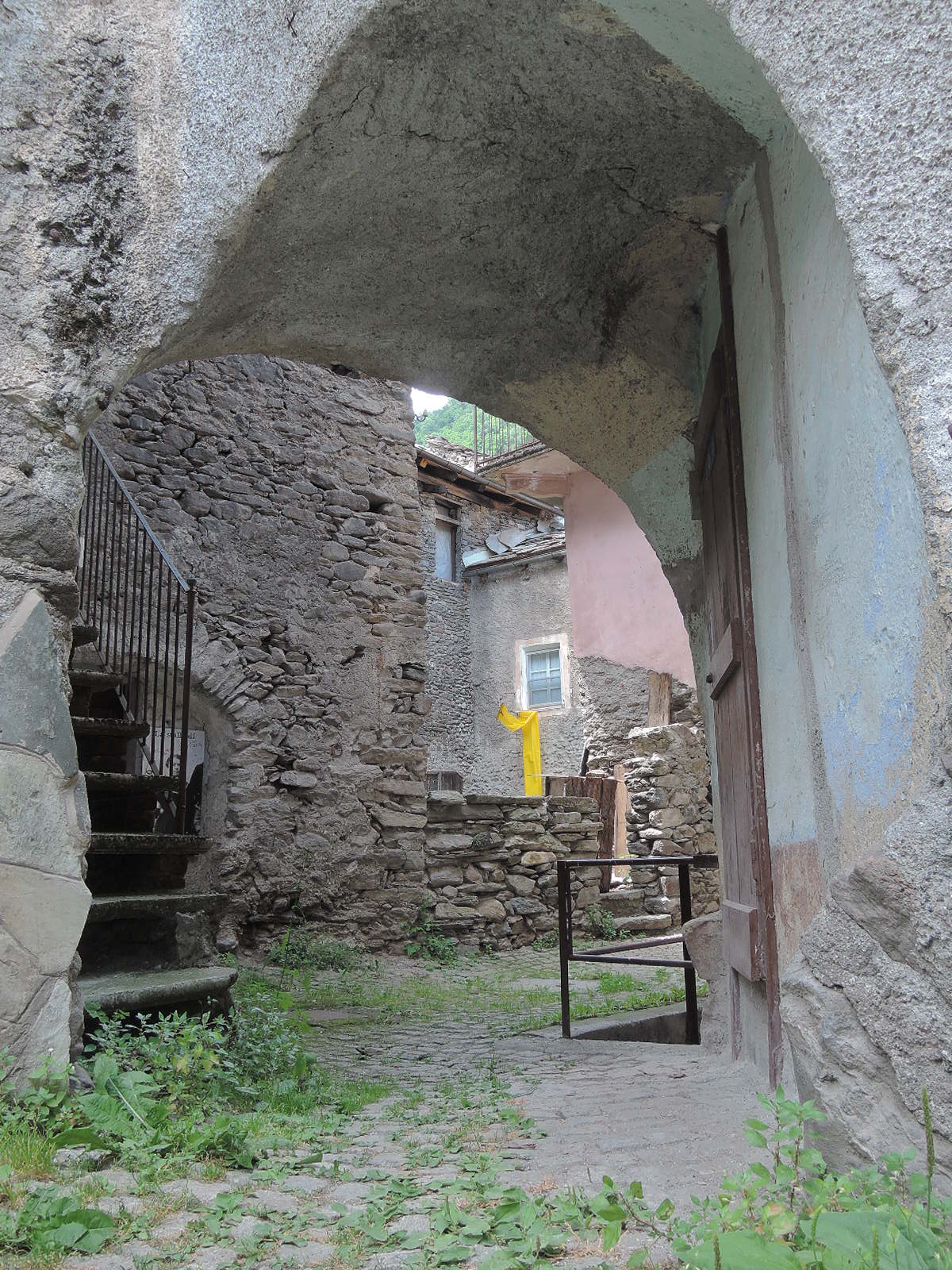




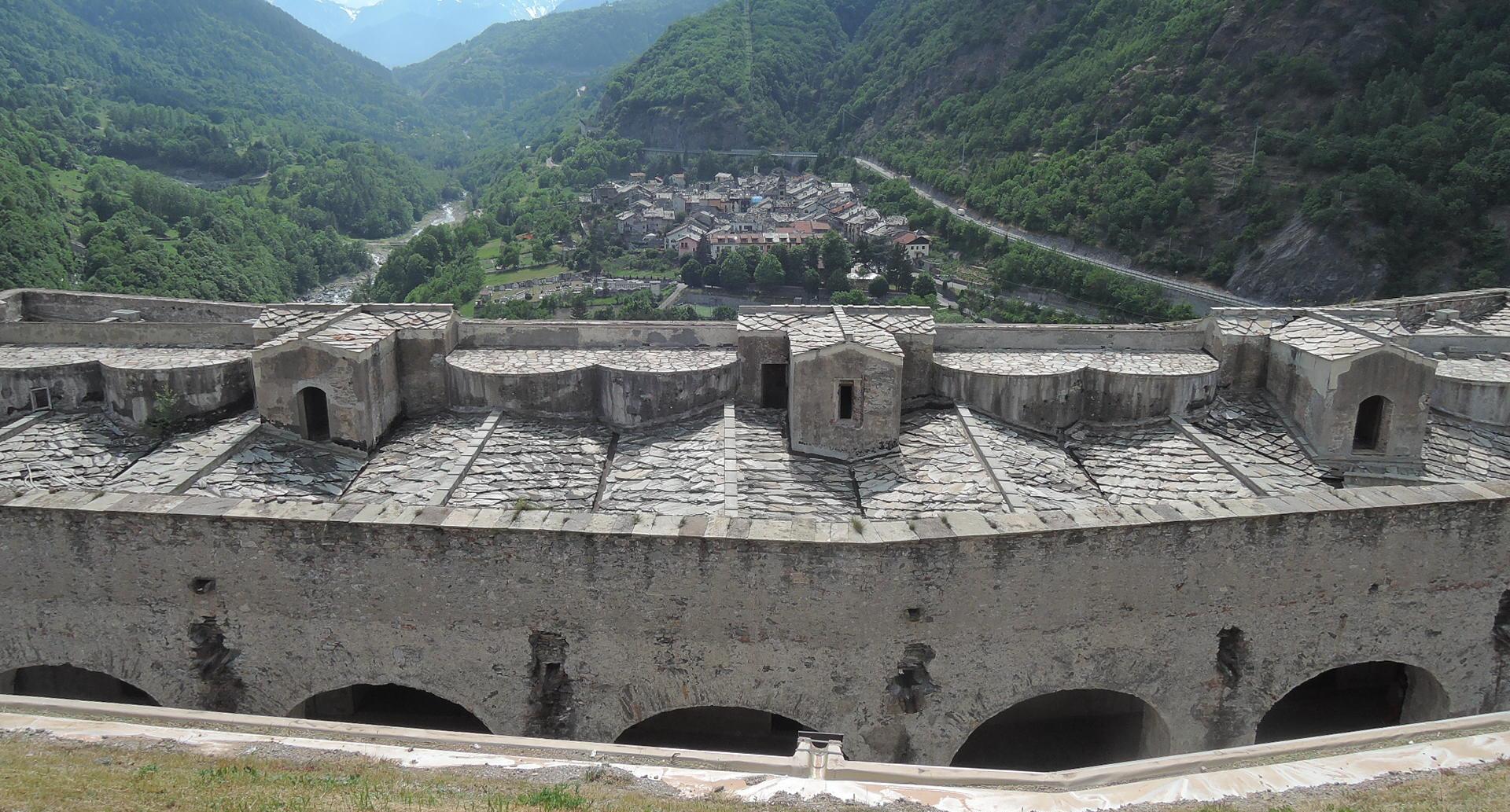
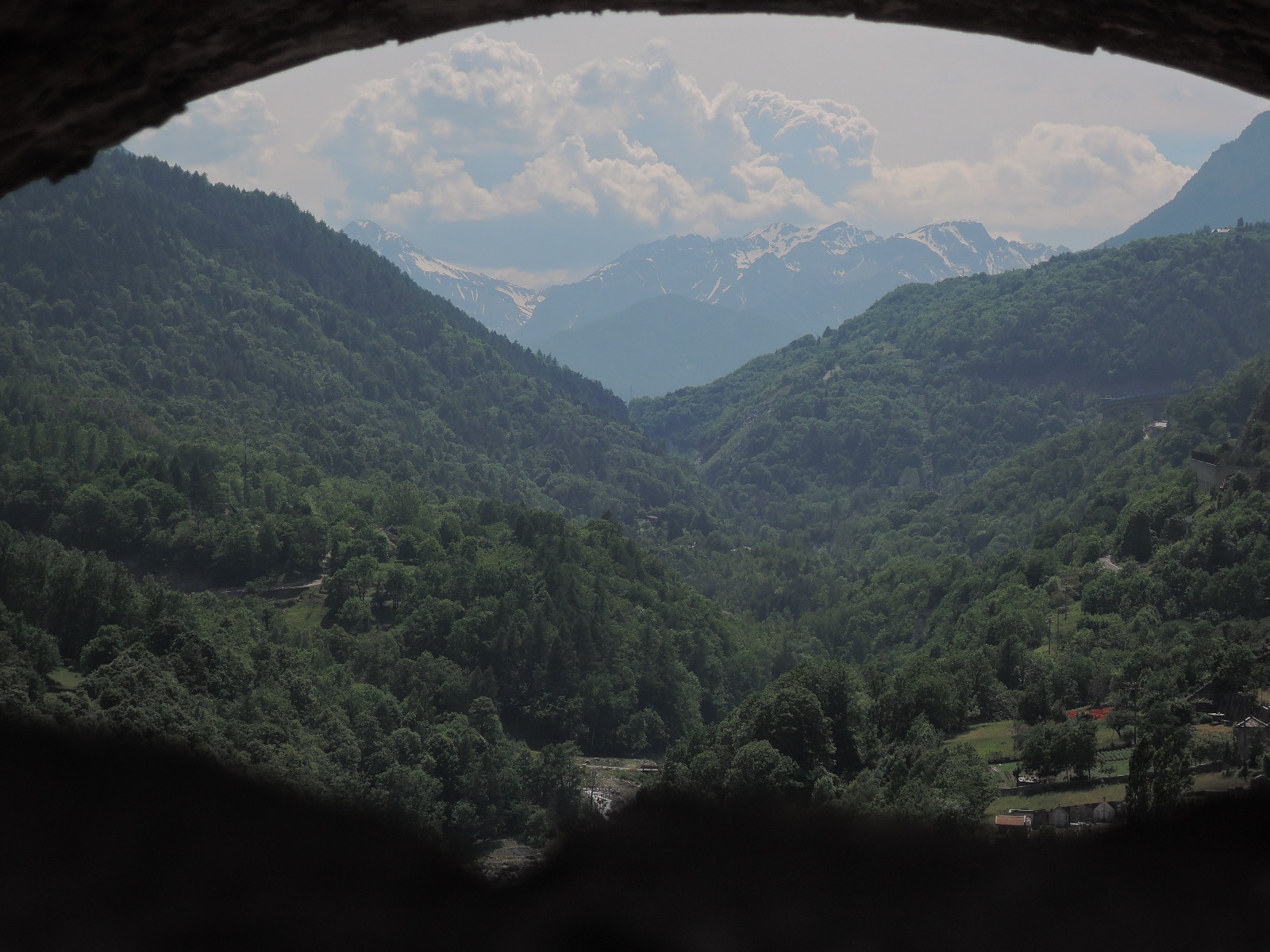
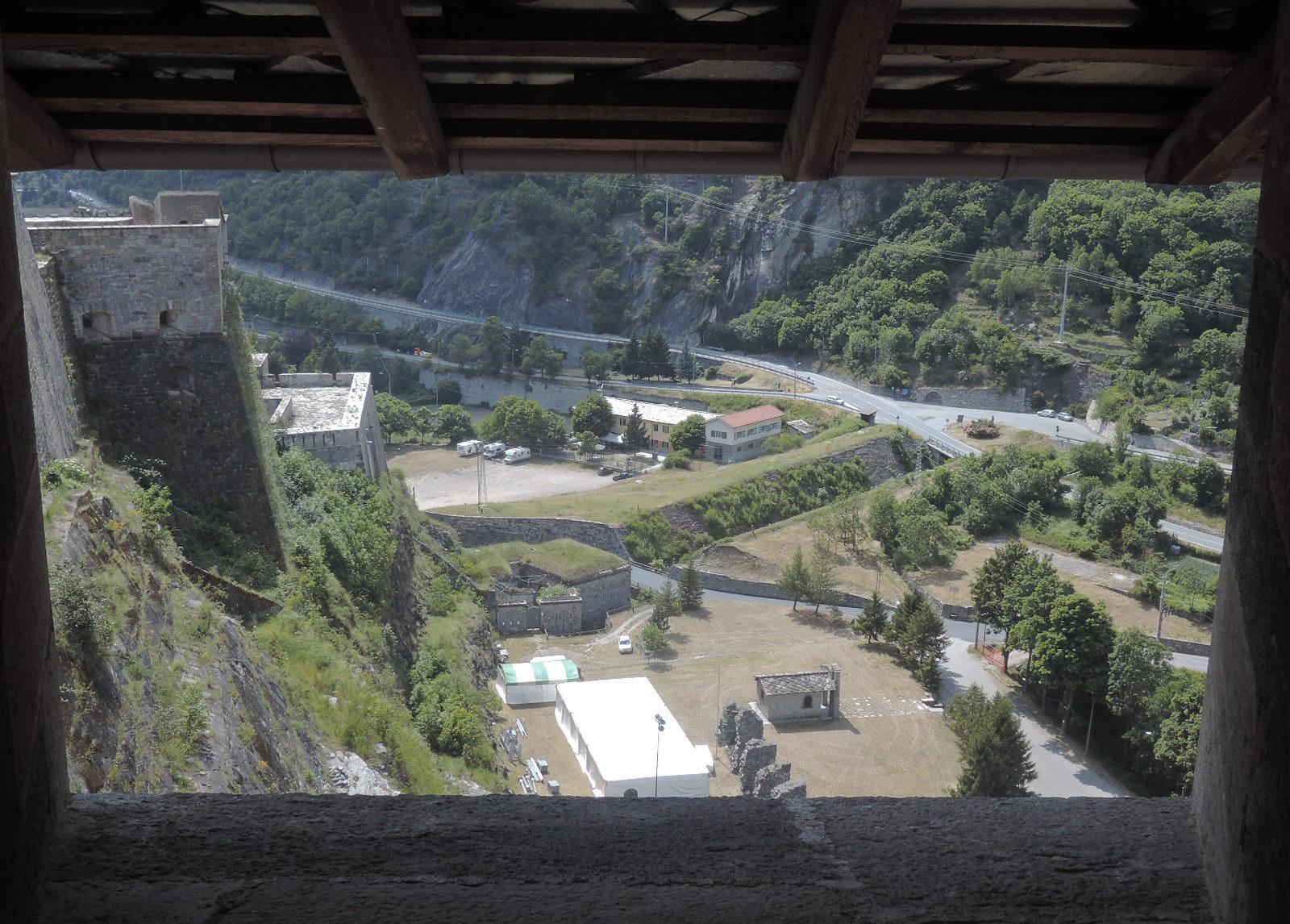
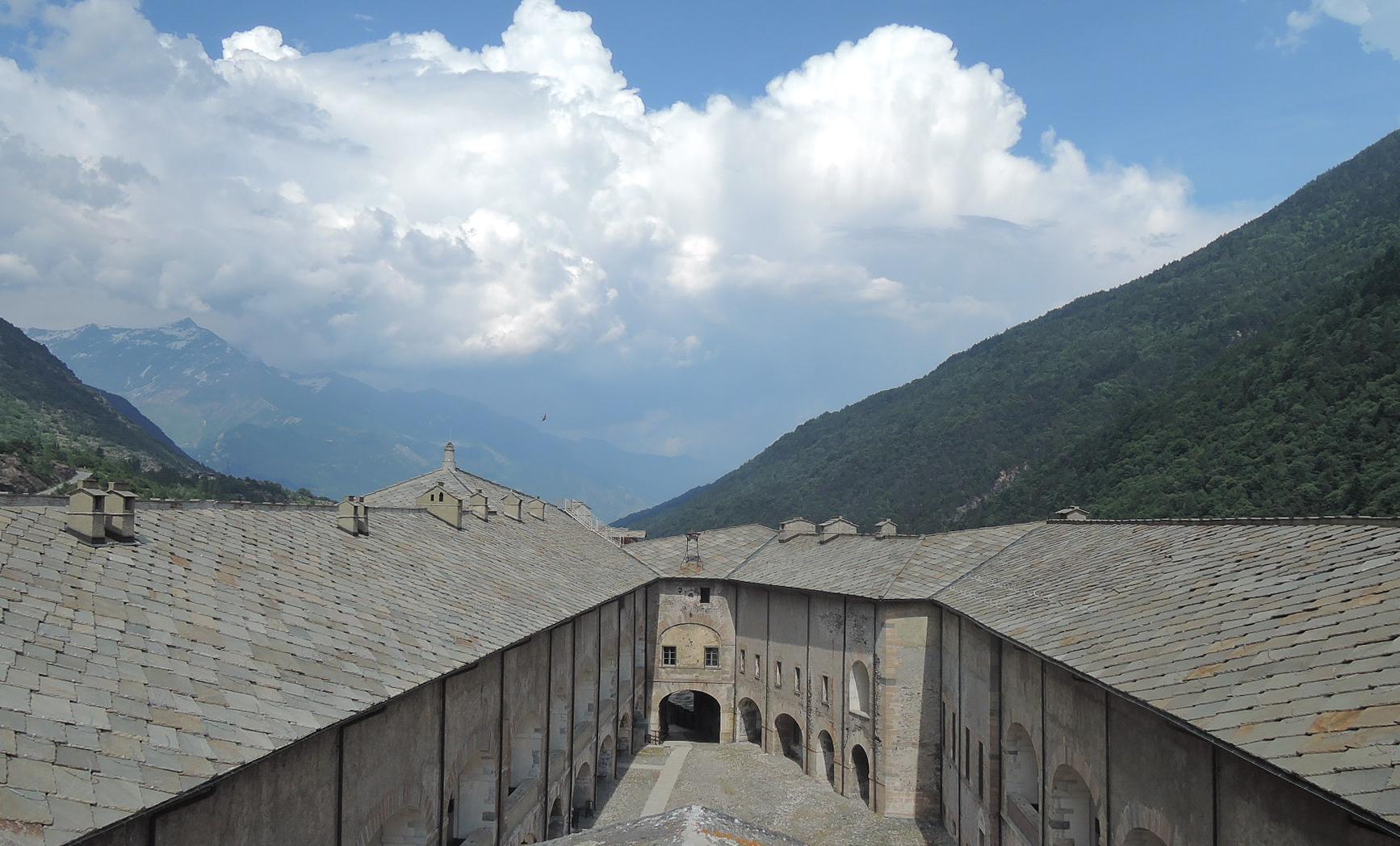





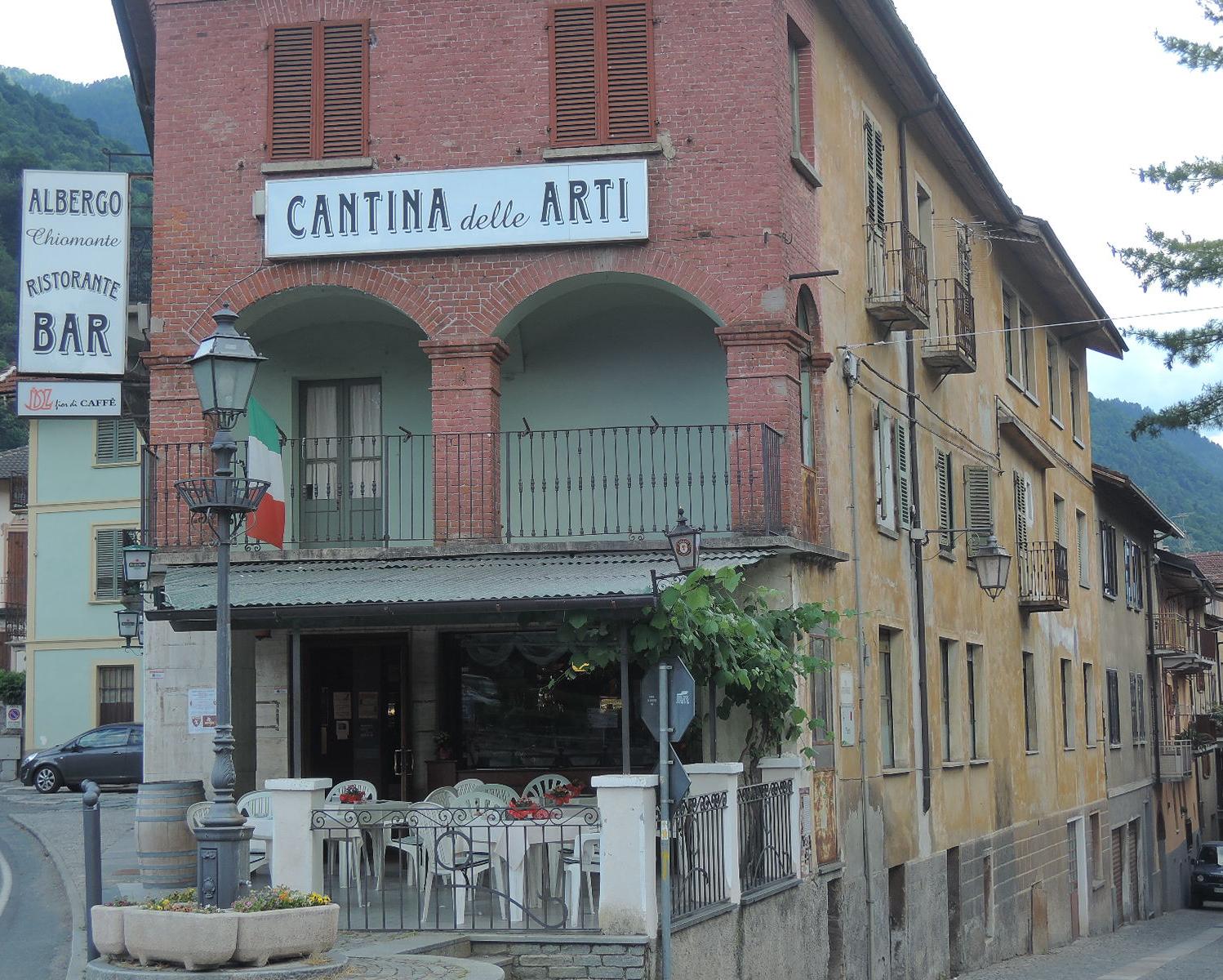
Dear Pablo,
as usual, very interesting storytelling from You!
I really appreciate it and read with pleasure.
Artur
Thank you! I appreciate very much encouraging comments. 🙂